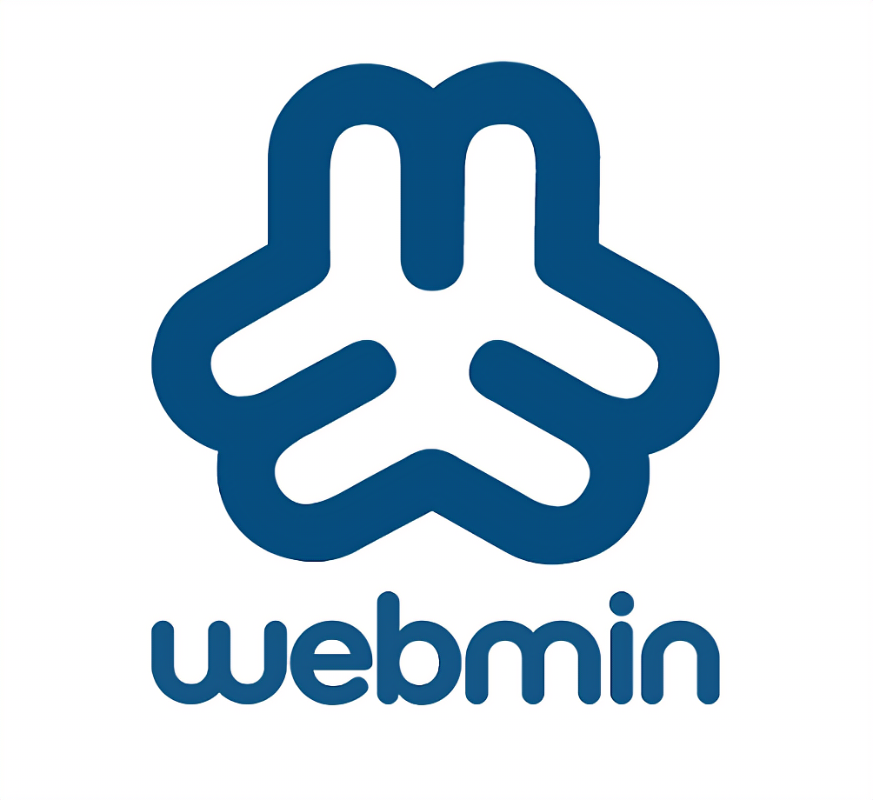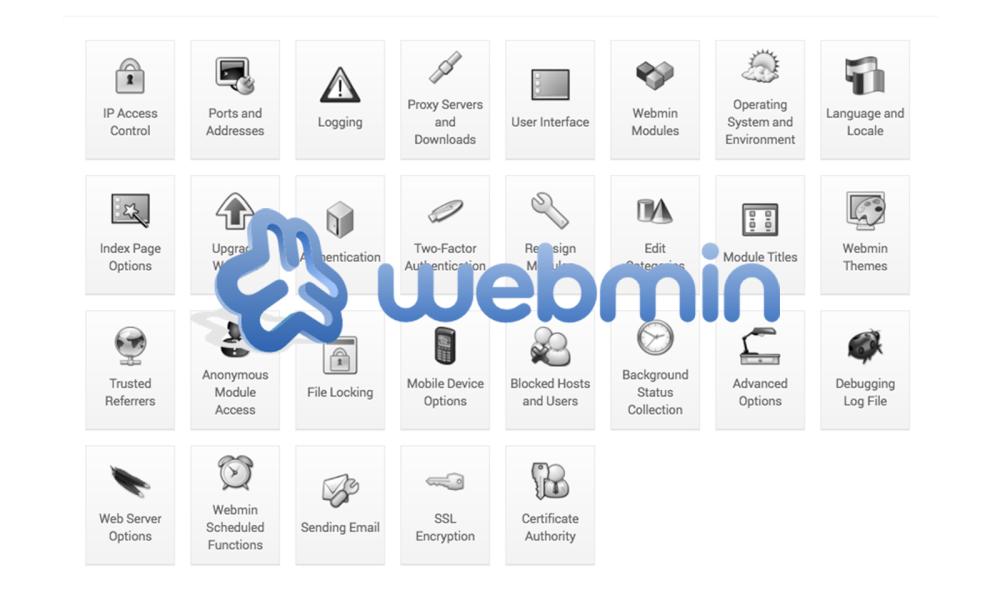
webmin control panel is a web-based control panel designed to simplify the management of Unix-like systems (such as Linux, Solaris, FreeBSD, etc.) through a graphical interface, rather than relying solely on the command line. It allows system administrators to perform system configuration and administration tasks using a web browser, which makes managing servers more accessible, especially for those who may not be comfortable using the terminal.
Table of Contents
Key Features of webmin control panel:
- User-Friendly Interface: Provides a graphical interface accessible via a web browser, which is helpful for users who prefer not to manage servers via the command line.
- Modular Design: Webmin consists of modules that allow users to configure various aspects of their systems, such as:
- User and group management.
- File system and disk quota management.
- Network configuration.
- Apache web server management.
- Database management (e.g., MySQL, PostgreSQL).
- Email server configuration (e.g., Postfix, Sendmail).
- Firewall and security settings.
- Cross-Platform: While originally designed for Unix-like systems, Webmin can also be installed on Windows and provides similar functionalities for those systems.
- Remote Management: Allows administrators to manage systems remotely via a web browser, which can be particularly useful when managing servers that are not physically accessible.
- Custom Modules and Extensions: Webmin can be extended through the installation of custom modules, allowing it to support more specific or advanced configurations.
- Web-Based File Manager: A web interface for managing files on the server, enabling file uploads, downloads, and editing.
Use Cases:
- Webmin is popular among small to medium-sized businesses, hosting providers, and users who need to manage their Linux-based servers without deep expertise in Linux commands.
- It is useful for tasks like creating virtual hosts, configuring DNS, managing databases, setting up cron jobs, or monitoring system performance.
Comparison with Other Control Panels:
- cPanel and Plesk: Webmin is often compared to these other popular web hosting control panels. However, while cPanel and Plesk are commercial and mainly focused on web hosting, Webmin is open-source and more general-purpose, making it suitable for a broader range of system administration tasks beyond just web hosting.
Webmin offers a flexible and user-friendly approach to server management, making it a good option for those who want to manage their servers via a web interface without needing deep command-line expertise.
Here’s a more detailed exploration of Webmin, diving deeper into its features, architecture, and how it compares with other control panels.
More Detailed Features of Webmin:
- Web Interface Accessibility: Webmin allows you to access your server from any web browser, making it platform-independent and remotely accessible. Whether you’re using Windows, macOS, or another Linux machine, you can easily manage your server by logging in via the browser on any device.
- Modules for Server Services: Webmin is designed around a modular architecture, meaning each system service (like email, web hosting, or databases) has its own module that you can install or remove based on your needs. Common modules include:
- Apache: Configure the Apache web server for hosting websites.
- MySQL/PostgreSQL: Manage databases, set up users, and monitor database performance.
- DNS Bind: Set up DNS servers for domain name resolution.
- DHCP: Manage Dynamic Host Configuration Protocol to assign IP addresses within a network.
- Security Features:
- SSL Support: Webmin can be secured with SSL/TLS to ensure secure communication between your browser and the server.
- User Privilege Control: You can create multiple user accounts and assign different privileges, allowing you to delegate control of certain services or aspects of the server.
- IP Access Control: Webmin allows you to restrict access to specific IP addresses or ranges, improving server security.
- Two-Factor Authentication: As security becomes more critical, Webmin supports two-factor authentication (2FA) to further protect your login credentials.
- File and Disk Management:
- File Manager: The web-based file manager allows you to upload, download, and modify files directly within Webmin. It also supports permissions management for files and directories.
- Disk Quotas: You can easily set disk usage quotas for different users or groups, ensuring that no one exceeds their allocated storage.
- RAID Configuration: Webmin provides an interface to configure and monitor RAID arrays, making it easier to set up redundancy and fault tolerance.
- System Monitoring and Alerts: Webmin provides real-time monitoring of system performance, including CPU load, memory usage, and network traffic. You can also set up automated alerts via email when certain thresholds are reached, such as disk space running low or CPU usage spiking.
- Task Automation: You can automate repetitive tasks with Webmin using its Cron module. This allows you to schedule system maintenance tasks, backups, or scripts to run at specific times or intervals, removing the need for manual intervention.
- Backup and Restore Capabilities: Webmin offers tools for backing up and restoring various parts of your system, including configurations, databases, and file systems. You can schedule automatic backups to external storage systems like FTP or NFS servers, ensuring that your data is protected.
- Firewall Management: Webmin offers modules to configure and manage firewalls such as iptables or firewalld, helping you secure your server against external threats. It provides a user-friendly interface to create rules, allowing or denying traffic based on IP, port, or protocol.
- Virtual Hosting Support: For web hosting, Webmin can be used to configure virtual hosts, enabling you to host multiple websites on a single server. You can easily add, modify, or delete virtual hosts and manage their resources, such as bandwidth and storage limits.
- Virtualmin: Webmin is the foundation for Virtualmin, a popular plugin that extends Webmin’s functionality specifically for web hosting management. Virtualmin transforms Webmin into a robust tool similar to cPanel or Plesk, providing features like:
- Website management.
- Automated SSL certificate installation (e.g., Let’s Encrypt).
- Email domain management.
- Domain registration integration.
Architecture:
- Client-Server Architecture: Webmin uses a client-server architecture, meaning that the web interface is the client, and Webmin itself acts as a server running on the host machine. The server communicates with the host system via backend scripts that perform the actual administrative tasks, while the client (the web interface) displays the configuration options to the user.
- Perl-based: Webmin is written in Perl and uses a built-in web server. This makes it lightweight and fast, without the need for a separate web server like Apache or Nginx to run the interface. You can install Webmin and have it manage your server in just a few minutes.
Installation and Compatibility:
Webmin is highly flexible and supports installation on most Linux distributions, including:
- Debian-based systems (e.g., Ubuntu, Debian).
- Red Hat-based systems (e.g., CentOS, Fedora).
- Solaris, FreeBSD, and other Unix-like systems.
The installation is relatively straightforward, typically involving adding the Webmin repository and installing the package via the system’s package manager (e.g., apt for Ubuntu or yum for CentOS).
Comparison with Other Control Panels:
- Webmin vs cPanel:
- Cost: Webmin is open-source and free, while cPanel is a commercial product with licensing fees.
- Scope: Webmin is more versatile, designed for general system administration tasks, while cPanel focuses mainly on web hosting. cPanel has a more polished interface specifically for hosting, but Webmin offers greater flexibility and control over server configurations.
- Webmin vs Plesk:
- Platform Support: Plesk supports both Linux and Windows servers, while Webmin has more extensive support for Unix-like systems and limited support for Windows.
- Ease of Use: Plesk offers an intuitive user interface geared towards hosting and website management, while Webmin’s interface, though comprehensive, can sometimes be less user-friendly for beginners.
- Webmin vs ISPConfig:
- Complexity: ISPConfig is similar to Webmin in that it is also an open-source control panel, but it is more narrowly focused on web hosting tasks. Webmin, with its modular design, offers more functionality and customization beyond just hosting.
Advantages and Disadvantages of Webmin:
Advantages:
- Free and open-source.
- Modular design with a vast array of available modules.
- Supports a wide variety of operating systems.
- Easily extendable and customizable.
- Lightweight and does not require significant server resources.
- Secure with SSL and user permission features.
Disadvantages:
- The user interface can be less intuitive compared to commercial alternatives like cPanel or Plesk.
- Some modules might require manual configuration or deeper knowledge of system internals.
- Limited out-of-the-box support for advanced hosting features (Virtualmin helps fill this gap).
Conclusion:
Webmin is a powerful, flexible, and free control panel that offers extensive capabilities for managing Unix-like servers. It is highly modular and covers a wide range of system administration tasks, making it a suitable choice for general server management as well as hosting. While it may not be as user-friendly as some commercial alternatives, its open-source nature and customizability make it an appealing option for system administrators who prefer granular control over their environments.



